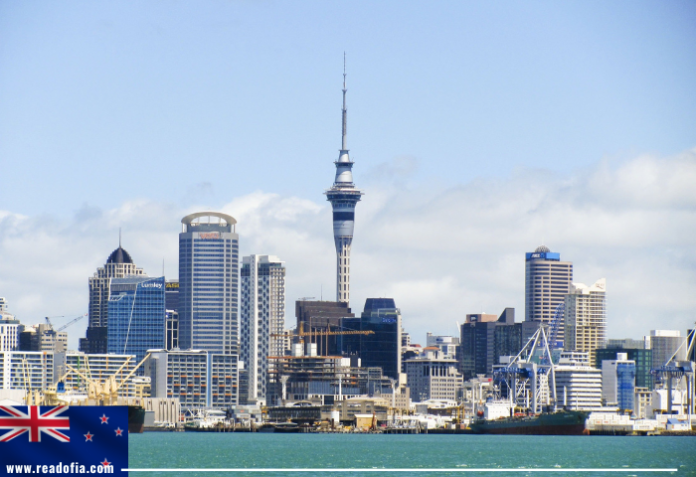New Zealand is an island nation in Oceania .The North Island and South Island are the two landmasses. Being isolated for many years, it enriched in the development of biodiversity of animal, fungal, and plant life. It was the last large habitable land inhabited by humans. A unique Maori culture was developed by Polynesians who settled on the island between 1280 and 1350. A dutch Explorer Abel Tasman was the first European to see New Zealand in 1642. British sovereignty declared over the islands after the Treaty of Waitangi signed by UK representatives and Maori chiefs in 1840. New Zealand became a dominion within the British Empire in 1907. Nationally, Unicameral Parliament has the legislative authority, while the executive powers are administered by cabinet Prime minister, currently Jacinda Ardern. A governor-general Dame Patsy Reddy represents the country’s Monarch Queen Elizabeth II. For local government purposes, the country is divided into 11 regional councils and 67 territorial authorities. NZ’s empire includes Tokelau, the Cook Islands, Niue, and the Ross Dependency.
Culture
The culture of New Zealand mainly got from Maori and early British settlers. The majority of the population is of European descent, followed by Asians and Pacific Islanders. Indigenous Maori is the country’s largest minority group. European, Maori, Asian, Pacific peoples, Middle Eastern, Latin American, and Africans (MELAA) are the ethnic groups of New Zealand.
Ethnic Groups
According to the latest census available, Ethnic groups of New Zealand are European 71.8%, Maori 16.5%, Asian 15.3%, Pacific peoples 9.0%, MELAA 1.5%, and other 1.2%.
Land Area
With a total land area of 268, 021 square kilometers, NZ contains more than 600 small islands. Cook Strait separates the two main islands of the country. The south island is highly mountainous and having the largest landmass while compared to the North Island. The highly active Taupo Volcanic Zone lies on the North Island’s highest mountain, Mount Ruapehu. The tectonic uplift of land and volcanic eruptions caused due to country’s varied topography and sharp peaks.
Population
According to the World Bank report, New Zealand’s population in March 2020 around 5 million. The Population density is 18.4 people per square kilometer. The life expectancy at birth of the total population was 82 years. The net migration rate is 74 per thousand communities
Religion
Christianity is considered the predominant religion of the country, followed by 37% of the population. About half of the populations are nonreligios. According to the latest census, 48.5% of populations are non-religious, 37% are Christians, 2.6% are Hindus, 1.3% are Islams, 1.1% are Buddhas, 0.8% are Sikhs, 1.1% follow other religion and 6.6% undeclared.
Languages
English, Maori, and New Zealand sign language are the official languages of the country. New Zealand sign language is the primary language of the deaf community, and it became official in 2006. Samoan, Mandarin, and Hindi are the non-official languages widely spoken in some parts of the country.
Economy
According to the World Bank report, exports and imports of goods and services contribute to 28% of GDP. Its military expenditure on GDP is 1.2%. By the World Bank Atlas method, New Zealand Gross National Income (GNI) in 2018 is $198.57 billion, and GNI per capita is $41,020.The service sector is considered the primary source of the national economy, Followed by industrial and agriculture. From the 1980s, New Zealand has a free-trade economy. New Zealand had a GDP of 204.92 USD billion in 2018 and ranks 14 out of 189 countries with Human Development Index value (HDI) of 0.921.
FAQ‘s
Where is the Hobbiton movie set in New Zealand?
In Waikato, New Zealand, The Hobbiton movie set is located on a farm about 8 km west of Hinuera and 10 km southwest of Matamata. This location was used for The Lord of the Rings film trilogy and The Hobbit film trilogy.
Where is New Zealand located?
New Zealand is a country that lies in the Southwestern Pacific Ocean. The North Island and the South Island are the two main landmasses. It shares coastal borders with Australia and other island nations, including Tonga, Fiji, and New Caledonia.
Why does New Zealanders are called kiwis?
The name ‘kiwi’ comes from a tiny bird that is unique to New Zealand. New Zealand warriors were referred to as ‘kiwis’ during the First World War, and the nickname stuck. Thus, Kiwi is a typical self-reference used by New Zealanders; however, it is likewise utilized globally.
What is the name of New Zealand currency?
The official currency of New Zealand is known as the New Zealand dollar.
What is New Zealand best known for?
New Zealand is an island country, it is best known for its indigenous Maori culture, stunning landscape, national rugby team, unbelievable hiking trails, and first-class skiing and surfing.
What are the languages spoken in New Zealand in 2021?
New Zealand has three official languages they are English, Maori, and New Zealand Sign Language. In which most people speak English.

